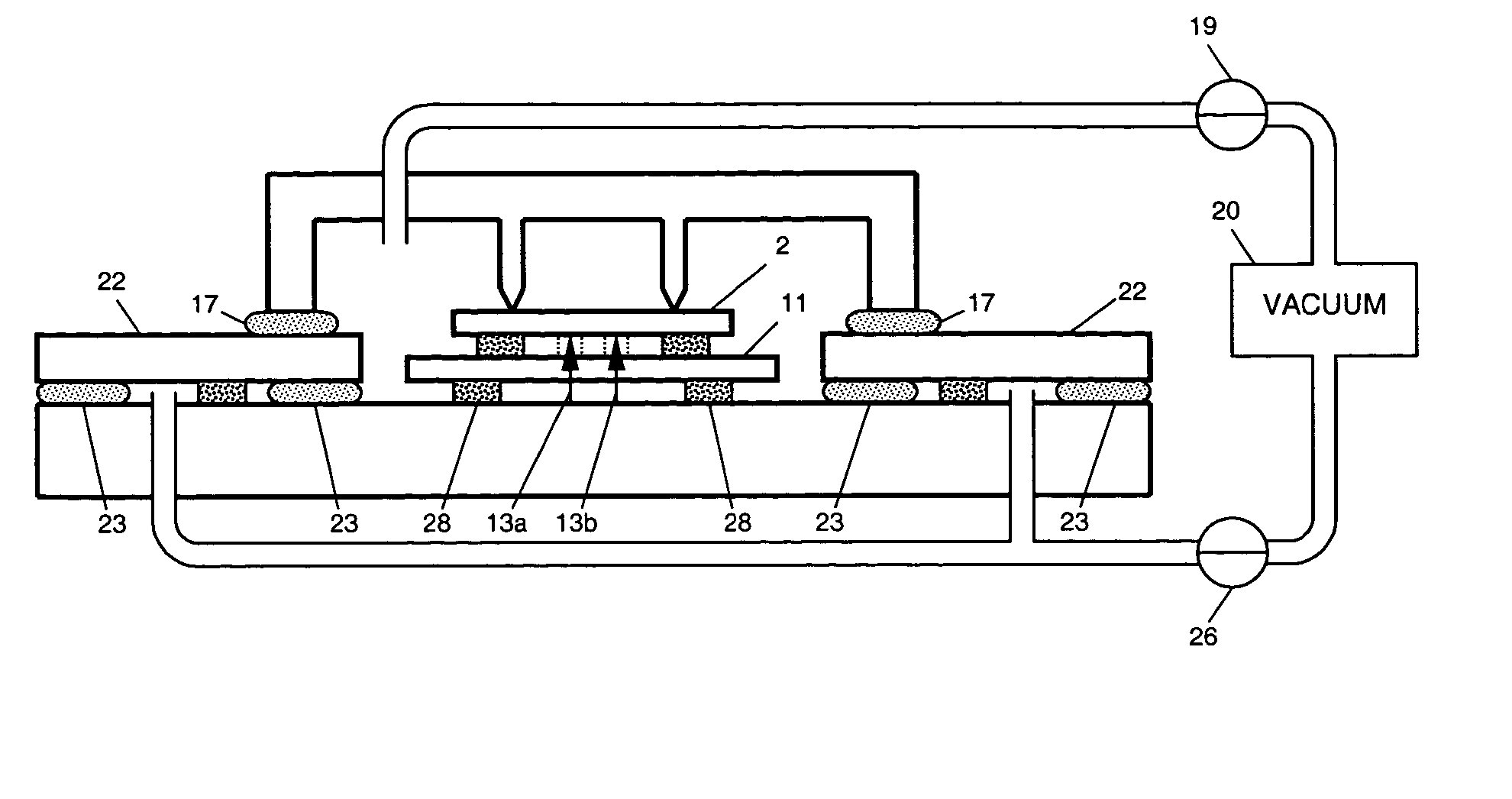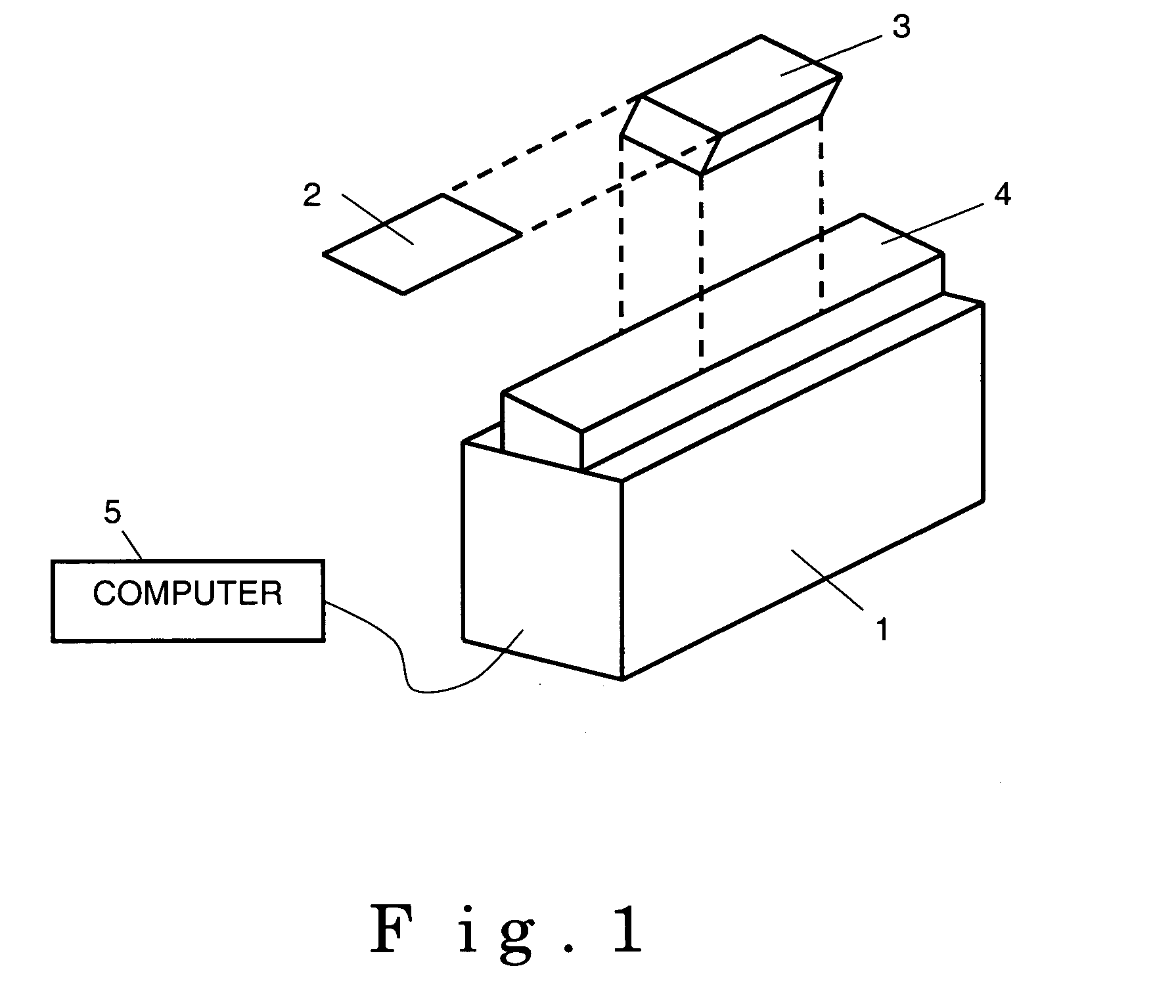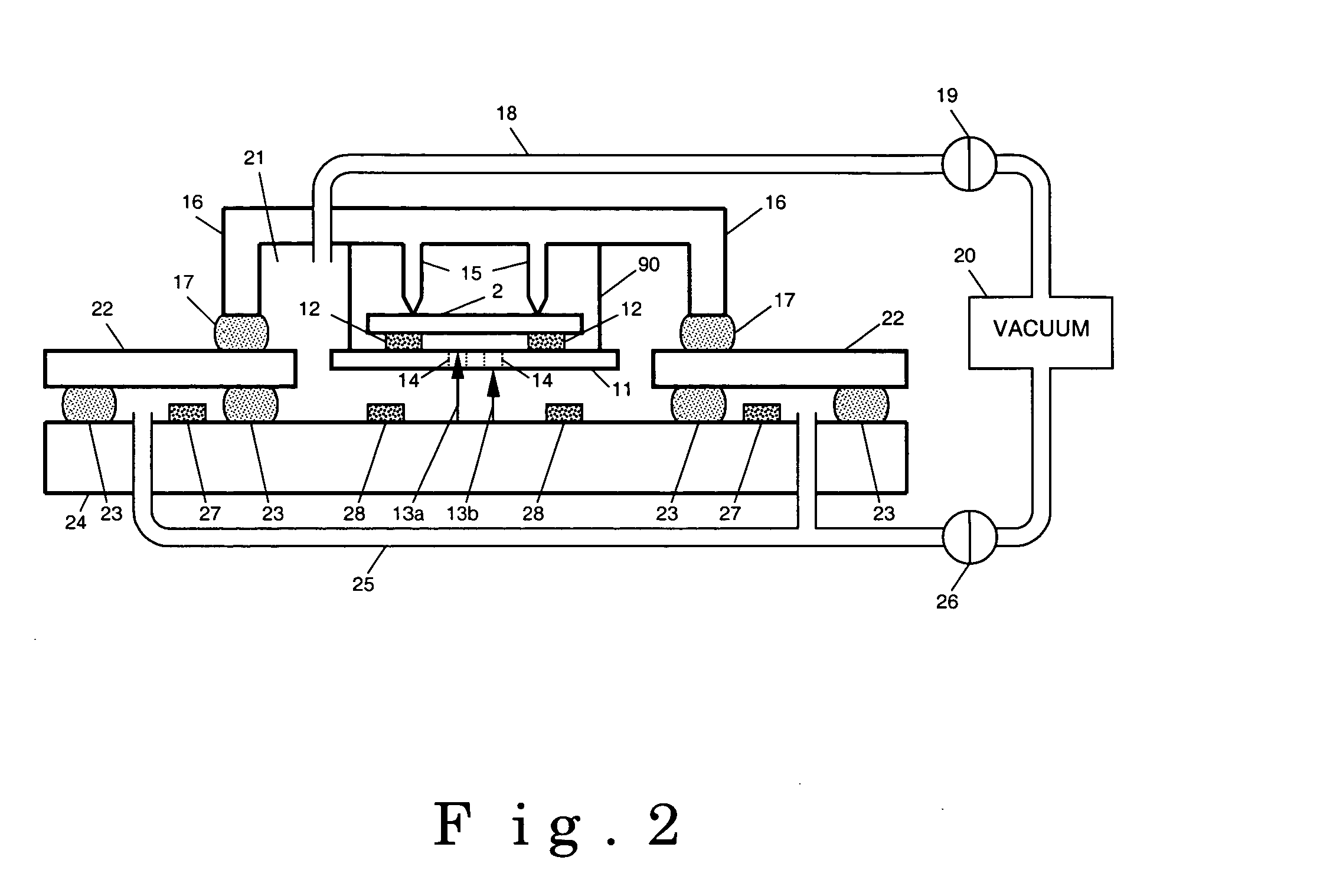Vacuum chamber with two-stage longitudinal translation for circuit board testing
a circuit board and longitudinal translation technology, applied in the direction of resistance/reactance/impedence, testing circuits, instruments, etc., can solve the problems of inability to move the shuttle plate, the shuttle plate approach can provide a relatively high amount of friction, and the test delay or failur
- Summary
- Abstract
- Description
- Claims
- Application Information
AI Technical Summary
Benefits of technology
Problems solved by technology
Method used
Image
Examples
Embodiment Construction
[0033] In a manufacturing environment for circuit boards, a final test will often be an electrical test, to ensure that each circuit board performs as required. Such tests are well-known in the industry, and may be performed by commercially available testers, such as Agilent Model 3070.
[0034] A basic schematic of a circuit board tester 1 is shown in FIG. 1. A circuit board, often referred to as a unit under test (UUT) 2, is mounted on a fixture 3 for the duration of the test, which provides a rugged mechanical mount for the UUT as well as a mechanical interface with other components in the tester 1. The fixture 3 is positioned on a bed 4, so that various electrical probes may make contact with specific locations on the UUT 2 and perform the desired tests. The probes may apply and measure voltages or currents at various locations on the UUT 2, and are controlled mechanically and electrically by the tester 1. A computer 5 may control the tester 1 and may record data from the tests.
[...
PUM
 Login to View More
Login to View More Abstract
Description
Claims
Application Information
 Login to View More
Login to View More - R&D
- Intellectual Property
- Life Sciences
- Materials
- Tech Scout
- Unparalleled Data Quality
- Higher Quality Content
- 60% Fewer Hallucinations
Browse by: Latest US Patents, China's latest patents, Technical Efficacy Thesaurus, Application Domain, Technology Topic, Popular Technical Reports.
© 2025 PatSnap. All rights reserved.Legal|Privacy policy|Modern Slavery Act Transparency Statement|Sitemap|About US| Contact US: help@patsnap.com



